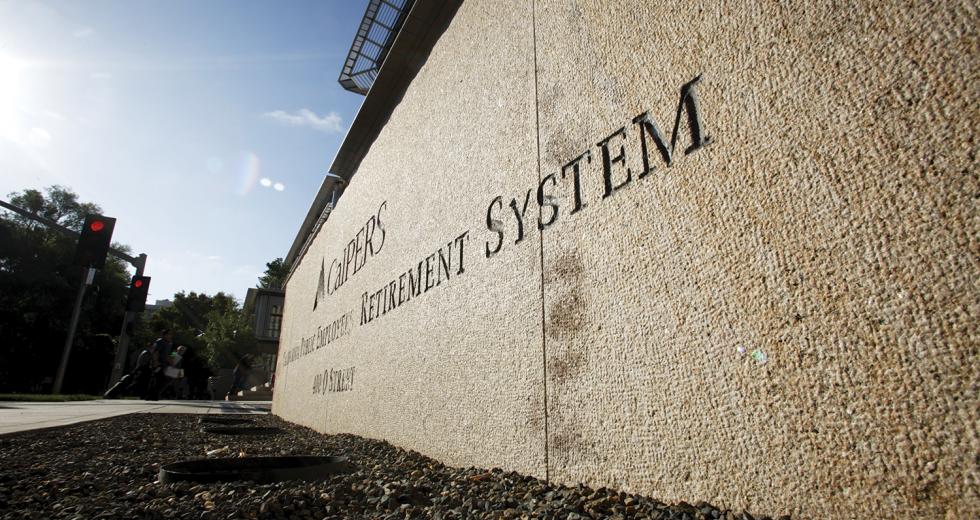Looking back, it’s easy to see how some local government pension plans wound up underfunded. As described in last month’s issue, much of the blame goes to generous legislation passed during California’s boom cycles.
Also, most local government pensions are still defined-benefit plans, where retirees are promised a fixed payout no matter how much investment it takes to hit the numbers.
The path toward stability is murkier. If a second tier of lower pension benefits were added for new hires, for example, the savings wouldn’t show up until they retired decades from now, says a report released this year from the state’s Little Hoover Commission.
And there are legal roadblocks to swift change. While much attention has been focused lately on Wisconsin restricting the collective bargaining rights of its government employees, that state is still the exception rather than the rule. In California, as in most states, pensions must be negotiated, not dictated.
The Little Hoover Commission proposes a fundamental change: “Public agencies must have the flexibility and authority to freeze accrued pension benefits for current workers and make changes to pension formulas going forward to protect state and local public employees and the public good,” the report says. The commission also wants to let voters have a say in any benefit increases they’ll ultimately have to pay.
The report even went so far as to suggest the federal government should extend Social Security to the roughly half of public employees in California who currently don’t pay into that system.
Another option is one that the federal government adopted in 1987. It starts with the traditional defined-benefit plan for the first 1.1 percent of final compensation for each year of service. That’s combined with a 401(k) plan and Social Security benefits.
“The newer defined-benefit pension plan requires lower contributions for employees and federal agencies — and it was 100 percent funded as of 2009,” the commission reported.
Gov. Jerry Brown included some other options in his own 12-point pension reform plan released in March. Topping the list is the elimination of so-called airtime, in which an employee essentially is allowed to buy credit for extra benefits.
Next is a ban on pension holidays like the one during the dot-com boom. With tax revenue pouring in, California simply stopped adding to the pot for a while. State and local government also couldn’t make retroactive benefit increases, another questionable move from the late ’90s and early 2000s. And if any employee is convicted of a felony related to his or her job, the pension benefits disappear completely.
The organization that would feel the most impact from any of these changes, the California Public Employees’ Retirement System, has kept its distance from the discussion.
“CalPERS at this time doesn’t have specific responses to legislative and/or proposed ballot initiatives about pension reform,” says spokesman Clark McKinley. “Our process is to have staff bring legislation before the Board of Administration for actions of support, opposition, neutrality or qualified support. That hasn’t happened yet.”
Still, CalPERS has publicly opposed any moves that would undermine â?¨defined-benefit plans. If new employees were put in a defined-contribution plan, basically a 401(k), CalPERS would still have to run the old plan until the death of the last employee it covers. That would push up administrative costs.
Most plans include at least one of five basic approaches: Make employees wait longer, make employees pay more, make fewer promises, break some promises already made or get rid of jobs.
California is hardly alone in trying to cope with underfunded public pensions. States, counties and cities across the country are testing dozens of cost-cutting strategies. Most plans include at least one of five basic approaches: Make employees wait longer, make employees pay more, make fewer promises, break some promises already made or get rid of jobs.
Waiting can take a couple of forms. First there’s the amount of time an employee has to hold a job before the benefits are locked in. Cobb County, Ga., and the city of Sunrise, Fla., have stretched out such vesting periods.
Other places are making employees wait longer before they can retire. In Arizona, House Speaker Kirk Adams is sponsoring a bill that removes early retirement options. For police and public safety plans, employees would have to work at least 25 years instead of the current 20.
Florida is taking similar actions for employees who join the retirement system after July 1 this year. Police, firefighters and paramedics will have to work 30 years or until age 62 instead of 25 years or age 60. For teachers and state employees, retirement age goes up from 62 to 65, or 33 years of service instead of 30.
A bill is working its way through the Massachusetts Legislature that would shift the retirement range for most employees to between 60 and 67 instead of the current 55 to 60. Police officers and firefighters would see a similar shift. The old retirement range was age 45 to 55; the new one would be 50 to 57.
New Hampshire is simply tacking on an extra five years across the board in a bill that passed the House and went on to the Senate. And once you’re gone, you can’t double dip. Retired employees couldn’t be rehired full-time while collecting benefits.
While employees will have to wait longer before they collect, governments also want to boost the amount employees pay. Riverside County and the city of Palo Alto have asked employees to cover more of their own pension costs. The idea is gaining popularity across the country as well.
In Florida, government workers have never had to contribute. Now, they will have to kick in 3 percent.
Likewise, Oregon government agencies have been picking up employees’ 6 percent contribution to the retirement system and the full cost of health insurance. Gov. John Kitzhaber has proposed making government employees pay the 6 percent and pick up any future increases in the cost of health insurance. Oregon representatives of the American Federation of State, County and Municipal Employees want to see salaries increased to cover the extra 6 percent, or about $375 million a year.
Oregon has another quirk. On one hand it taxes public pension benefits, but on the other it gives retirees extra money to cover the tax. A bill now going through the Legislature would cut extra money for retirees who move out of state.
An Illinois bill would offer three options. If government employees want their current benefits, they’d have to make much higher contributions. A House Republican fact sheet pegs it at 28 percent of salary. The second option keeps the cost down but lowers benefits and doesn’t let employees collect until age 67. The third option would create a 401(k)-style plan with the state matching a 6 percent employee contribution.
Michigan wants retirees to pay some of the pension back in the form of taxes. Michigan public pensions aren’t taxed now. Under a proposal by Gov. Rick Snyder, those above $45,000 would be.
The 401(k)-style plans all fall under the heading of making fewer promises. The amount going into the plan is fixed. What benefits come out at the end can’t be known for sure until it happens. Kentucky and Nevada are considering the idea for new employees. North Dakota’s House of Representatives rejected it.
Arizona’s bill would cut down on promised pensions by doing away with cost-of-living adjustments. Many cities in Texas have already done the same.
Several states are stretching out the period used to calculate the base rate for a pension. Arizona’s police officers, for example, used the three highest-â?¨average years in the past decade. That’s being expanded to five out of 10. One or two high-paying years at the end of a career won’t give the pension as much of a boost under the new formula. Massachusetts Gov. Deval Patrick wants to make the same kind of change in his state.
“When you look at investment assumptions, there is no one right answer.”
Joshua Franzel, vice president of research, Center for State and Local Government Excellence
Maine Gov. Paul LePage put together a budget proposal that would repeal some “solemn contractual commitments” for pension benefits: “This budget asks retirees to forgo cost of living increases in the short term and to accept modest increases in the future.”
Yet another way to grapple with pensions is to cut other personnel costs. In mid-May the city of San Jose announced that its annual retirement costs, which rose from $63 million in 2000 to $250 million in 2011, make up about half the $115 million budget deficit for the upcoming fiscal year. The 2011-12 budget passed in June, eliminating 278 city positions with the biggest blow to first responders. Nearly 70 police officers had to turn in their badges on June 30.
Earlier this year, the city of Costa Mesa in Orange County gave layoff notices to 213 of its 472 employees, planning to outsource jobs and shrink its pension burden. The Costa Mesa Employees Association fought back by going to court to stop the action.
The Center for State and Local Government Excellence in Washington has put together a database of 126 state and local pension plans, tracking benefits over the past decade and the variables that influence them.
Good plans share a few characteristics, says Joshua Franzel, vice president of research. They fund their annual contributions in good times and bad, they typically don’t allow pension calculations to include overtime and other extras and they make realistic assumptions about investment income.
Consistent contributions aren’t the norm. The Pew Center On The States found that only about one-third of states always put in the amount their own actuaries say is necessary. In 2006, as the economy was peaking, 20 states contributed less than 95 percent of the amount their actuaries targeted, and 10 states contributed less than 80 percent. States that have consistently fallen short include Colorado, Illinois, Kansas, Michigan, New Jersey, Oklahoma and Washington, according to Pew.
“When you look at investment assumptions, there is no one right answer,” Franzel says. “We don’t recommend a certain return assumption,” but the good plans change their assumptions as conditions dictate.
CalPERS came under fire for assuming what some called unrealistic returns. This year it voted to keep the pension fund’s assumed annual rate of investment return at 7.75 percent. The assumption is that, over 20 years, it will average out to that rate.
For someone earning less than 1 percent a year on a bank account, that may seem aggressive. But Rhode Island’s retirement board had been assuming 8.25 percent until this past April, when it lowered its expectations to 7.5 percent. And as the battered economy staggers to its feet, CalPERS may see some vindication in its optimism.
For the fiscal year that ended June 30, 2010, CalPERS earned a 13.3 percent return. And in a May interview on National Public Radio’s “Morning Edition,” CalPERS’ Chief Investment Officer Joseph Dear pointed out that double-digit returns had boosted assets to $240 billion, after they had bottomed out at $165 billion in 2009.
Recommended For You
Gaining Control of Pensions
Public pensions are draining public coffers
When it comes to the California public pension system, one thing is crystal clear: it absolutely must and will change. The question is when and how. Practically every expert who has analyzed the state’s pension figures uses the word “unsustainable” to describe the system.

Timing is Everything
Negotiating retirement with your spouse
At an age when many other couples still don’t have their day-to-day finances in shape, Sarah Britton and Will Gonzalez were already planning for their retirement. He was 36, she was 30.



